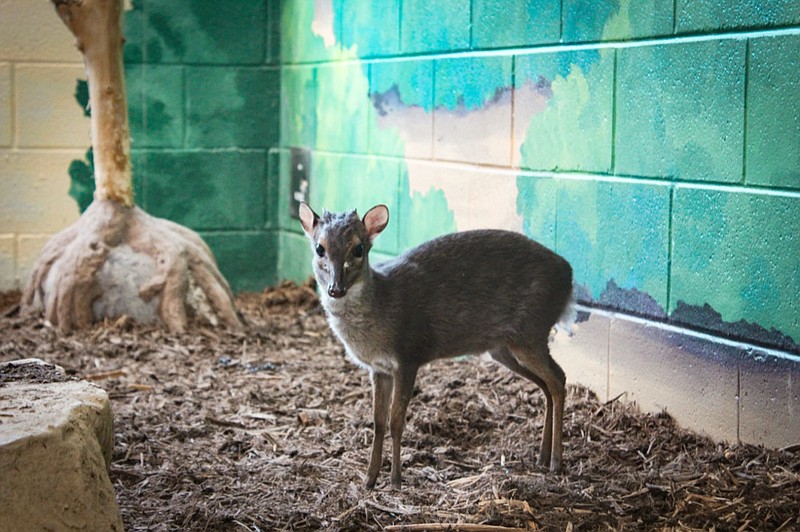The Chattanooga Zoo has expanded its animal collection once again to include two blue duikers, according to a news release from the Zoo.
The male and female blue duikers - a small antelope species that inhabits a variety of forests and woodlands throughout Africa - are a recommended breeding pair and currently reside in one of the indoor habitat spaces inside the newly constructed giraffe barn at the Zoo. They arrived at the facility about a month ago and the public can see them in the Makazi ya Twiga exhibit area.
Branch, the 6-year-old male, came from the Kansas City Zoo in Kansas City, MO, and Poppy, a 1-year-old female, came from the Maryland Zoo in Baltimore, MD. Both are adjusting to their new home and caregivers, the release states.
(READ MORE: Fun facts about Chattanooga Zoo's new giraffes)
"We are excited to continue to grow and diversify our animal collection with this new species," Zoo CEO and President Dardenelle Long said in the release. "The addition of our adorable blue duikers is indicative of our commitment to provide an engaging experience to help connect our visitors with our animals."
Blue duikers spend most of their time foraging for fruits and plants to eat on the forest floor. They get their name from the Dutch word for "diver" referring to their tendency to dive into dense underbrush and hide when they feel threatened.
According to the International Union for Conservation of Nature Red List, blue duikers are classified as "least concern" but are threatened in the wild by hunters and natural predators.
(READ MORE: Second litter of meerkat pups born at Chattanooga Zoo)
The blue duikers' arrived at the Zoo through the Association of Zoos and Aquariums' (AZA) Species Survival Plan (SSP), which is a population management and conservation program that seeks to enhance the preservation of threatened species in the wild by monitoring the placement, breeding and propagation of these selected species within AZA-accredited institutions, according to the release.
In May, three reticulated giraffes debuted at the Zoo, marking Phase 1 in its master plan. Phase 2 involves the additions of "hoof stock like gazelles and really cool things like warthogs," Long said. More African species will be added as additional phases are completed.
The Zoo reopened to the public with new guidelines on May 9 after a 53-day closure due to the coronavirus outbreak. All visitors age 12 and older are required to wear a face mask when entering the Zoo, in indoor spaces, during zoo experiences and activities and outdoors when unable to maintain appropriate social distancing from others.
More information about the Zoo's COVID-19 guidelines can be found at http://www.chattzoo.org/covid19updates.
